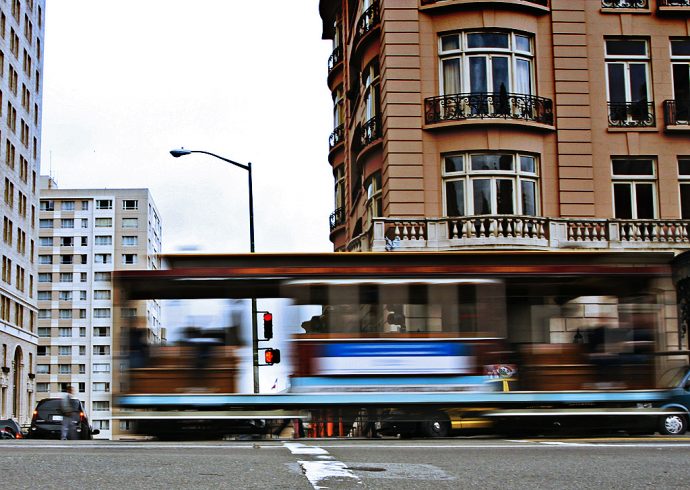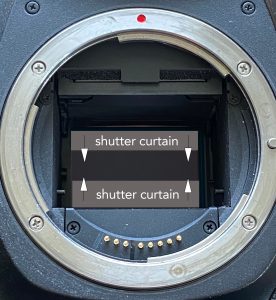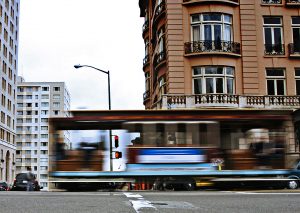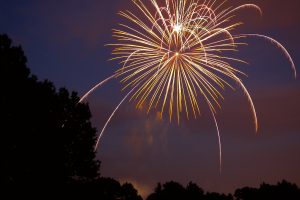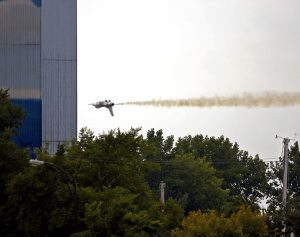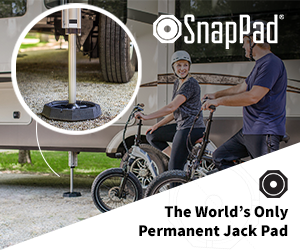As you’ve been following these RV Advisor photo tips, you’ve no doubt noticed the connective tissue of the abiding equation of photography:
LIGHT + TIME + MEDIUM = PHOTO
We are deeply into the time portion of the equation for the moment of this article. Phototips 6 touched briefly on the main timekeeper of your camera – the shutter.
We used the idea of window curtains. If you stand at the center of a picture window, holding the right curtain in your right hand, and the left curtain in your left hand, and briskly pull them together at the center, and then open the curtains again, you are performing the exact same function that a shutter performs.
The Life of a Shutter
The image above reveals the shutter and its placement within a camera body. The example above is a Canon DSLR, which stands for Digital Single Lens Reflex camera. We’ll examine what that means in a later version of Phototips. But for now, a tiny explanation of what you’re seeing above: the silver ring is the connection point for an interchangeable lens. Deeper in the opening is the shutter curtain assembly, and millimeters beneath that is the camera sensor.
The shutter – as seen above – is a split curtain, like the one we talked about above. It allows the proper (or improper) amount of light through the lens and onto the sensor, which makes your image. That’s all it takes, in the most basic way, for a camera to record an image.
The shutter opens and closes at the rate to which it is designated. In the automatic mode on a camera, the camera itself decides the proper shutter speed. In the hands of advanced photographers, they set the speed at which the shutter opens and closes.
Life at a Shutter’s Speed
The shutter is a remarkable little instrument. It can open and close as fast as 1/8000th of a second, and as slow as one minute, 30 minutes, or even 2 hours.
The duration of the shutter’s activity has a primary effect on the final image, and can greatly subjectify the photo as a result of the effect left on the sensor based on the time set for the shutter’s activity. What does that mean?
In the image above, you see a San Francisco cable car. It is clearly in motion as it passes in front of my lens. And the photo clearly shows that the only thing in motion is the cable car. But – why does it appear to be in motion? Why is it blurry? More curiously, HOW is it made blurry?
Simple – it’s a function of shutter speed. When you keep the shutter open for longer than, say 1/50th of a second, the sensor will pick up any movement of an object that the lens is focused on.
In the case of the cable car photo, i held my camera against my chest to stabilize it so as not to add any hand trembling. I set the shutter for 1/6th of a second. The only motion in the photo is the cable car, moving right to left. And since the background was not in motion, the buildings, pavement, etc was all crystal clear.
The same principle stands for this photo of fireworks. In this case, I attached the camera to a tripod and held the shutter curtains open for 10 full seconds. Since it was on a tripod, the camera and lens combination was firmly grounded, with no trembling or shaking. Thus all the motion was in the firework.
Speed in a Shutter’s Life
The opposite effect works for fast moving objects, Like the USAF Thunderbird in the image below. As the F-16s of the Thunderbirds travel at speeds over 400 mph, if I held the shutter open for 10 seconds, as in the firework photo, the resulting image would be completely blank.
For fast moving objects, the shutter must operate rapidly to capture the subject, and capture it clearly.
The Thunderbird image was ‘exposed’ (referring to the length of time the shutter remains open to ‘expose’ the sensor to make the image) for 1/2000th of a second.
A Simple Idea
It’s a pretty simple notion, at the heart of it:
SHORT SHUTTER SPEED: crisp capture of moving images or a scene
LONG SHUTTER SPEED: silky motion blur of moving subjects.
Experiment with shutter speeds. You’ll need to learn about turning your camera to a “shutter priority” setting. See what works, see what doesn’t. The beauty of digital photography is that you can experiment all you like, study the results, and delete what you don’t like!
Have a blast working with time, and we’ll see each other next time!
For back editions of The RV Advisor’s PhotoTips series, click here.

